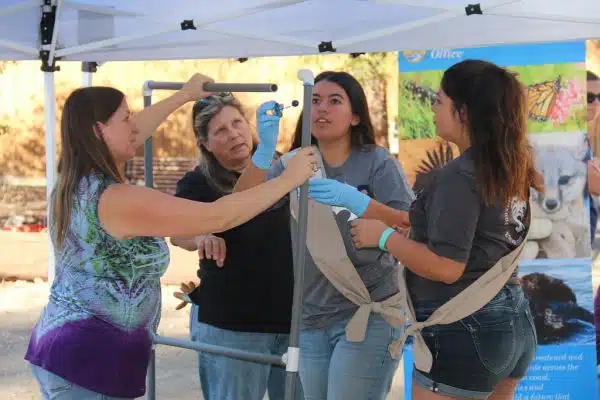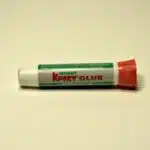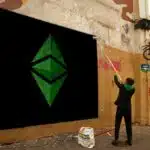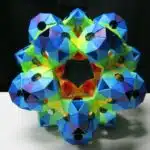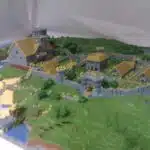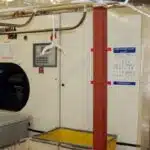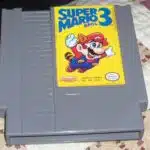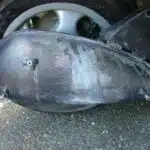As a PVC glue removal expert, I have encountered numerous cases where individuals struggle to remove the adhesive from their surfaces. This can be a frustrating experience, especially when you have invested time and resources in your project. However, with the right techniques and tools, removing PVC glue can be a straightforward process.
PVC glue is a type of adhesive that is commonly used in construction projects. It is an effective bonding agent that creates a strong bond between two surfaces. However, its strength makes it challenging to remove once it dries up. Additionally, some PVC glues contain hazardous chemicals that pose health risks if not handled correctly. In this article, we will explore various methods of removing PVC glue safely and efficiently, ensuring your safety while preserving the quality of your surfaces.
Understanding Pvc Glue And Its Properties
Imagine you have a PVC pipe that needs to be fixed. You grab your trusty PVC glue, apply it to the damaged area, and voila! But what exactly is PVC glue, and how does it work? PVC glue is a type of adhesive specifically designed for use with polyvinyl chloride (PVC) materials. Its composition typically consists of a solvent mixed with resin or rubber particles that, when applied to PVC surfaces, chemically bond them together.
Common uses for PVC glue include plumbing repairs, electrical conduit installations, and general construction projects. It is an effective adhesive because it forms a strong bond that can withstand high pressure and temperature changes. However, there are alternative adhesives available for those who prefer not to use PVC glue. Some examples include epoxy, silicone-based adhesives, and hot melt adhesives.
When working with PVC glue or any other adhesive, it’s essential to prepare your work area properly. This includes cleaning the surfaces you plan to bond thoroughly and ensuring they are dry before applying the adhesive. In the next section, we will discuss in detail how to prepare your work area for safe and effective removal of PVC glue residues.
Preparing Your Work Area
Understanding PVC glue and its properties is important when it comes to removing it. PVC glue, commonly known as solvent cement, is a strong adhesive used to join PVC pipes and fittings. It bonds quickly and creates a permanent seal that can be difficult to remove once set. To remove the glue, you need to know the right technique and tools to use for effective results.
Before you start removing the PVC glue, it’s important to prepare your work area properly. Clearing debris from the surrounding areas will prevent any accidents or damages from occurring during the glue removal process. Covering any surfaces that are not being worked on with drop cloths or plastic sheets will also protect them from accidental spills or damage.
Removing PVC glue can be hazardous if proper safety precautions are not taken. You should wear gloves, goggles, respiratory mask, and avoid inhaling the fumes produced by the solvent cement while working on it. Safety measures should be taken seriously since most of these solvents contain harmful chemicals that can cause skin irritation or respiratory issues if inhaled excessively. In addition, proper disposal of waste materials after removing the glue is essential for environmental protection.
In conclusion, removing PVC glue requires preparation of your work area by clearing debris and covering surrounding areas with protective materials. Always remember to take necessary safety precautions such as wearing gloves, goggles, respiratory masks, and avoiding inhaling fumes produced during the process. Proper disposal of waste materials after removal is critical for environmental conservation. The next section will discuss further safety precautions that should be taken when handling PVC glue removal.
Safety Precautions
When it comes to removing PVC glue, safety should always be the top priority. This means that you need to have proper safety equipment before starting the process. Some of the essential safety gear include gloves, goggles, and a respirator. The gloves will help protect your hands from the harsh chemicals in the glue, while goggles will prevent any splashes or fumes from getting into your eyes. A respirator is vital as it protects you from inhaling harmful fumes.
It’s crucial to avoid common mistakes when removing PVC glue. One of them is using too much force when scraping off the glue. Doing this can damage surfaces or hurt yourself if you slip with your scraper. Another mistake is not following instructions on the label of the glue remover product you’re using. Ensure you read and understand all instructions before beginning so that you don’t end up causing more harm than good.
In summary, always prioritize your safety when removing PVC glue by having proper safety equipment such as gloves, goggles, and a respirator. Also, avoid common mistakes like using too much force or ignoring product instructions. These precautions will ensure a safe and effective removal process.
- Wear protective clothing such as long-sleeved shirts and pants.
- Work in a well-ventilated area to reduce exposure to fumes.
- Use only recommended products for PVC glue removal.
- Follow instructions on labels carefully.
- Dispose of used materials safely according to local regulations.
Moving forward to scrape off excess glue after taking necessary safety precautions helps in an efficient removal process.
Scrape Off Excess Glue
- PVC glue should be scraped off using a razor blade or a putty knife to carefully remove the excess glue from the surface.
- Hot water can be used to soften the glue and make it easier to remove.
- Chemical solvents such as acetone may be necessary to remove any remaining glue residue.
- It is important to be careful when using a razor blade or putty knife to ensure that the surface is not damaged.
- Acetone should be used sparingly as it can be dangerous and should only be used in well-ventilated areas.
- Always wear safety glasses and gloves when using chemical solvents for PVC glue removal.
Scraping Tools
As a pvc glue removal expert, I have encountered various techniques and tools that work effectively in scraping off excess glue. One of the most common tools used for this purpose is a scraper. There are different types of scraping tools available in the market, such as flat scrapers, triangular scrapers, and curved scrapers. The type of scraper to use will depend on the surface area where the glue has adhered.
When using scraping tools, it’s essential to follow proper techniques to avoid damaging the surface. First, ensure that you hold the scraper at an angle of 45 degrees to scrape off as much glue as possible. Use gentle pressure when scraping and avoid applying too much force that could cause scratches or damage on the surface. Secondly, move the tool in a back-and-forth motion while maintaining consistent pressure until all excess glue is removed.
In conclusion, using scraping tools remains one of the most effective methods for removing pvc glue from surfaces. By choosing the right type of scraper and following proper techniques when using them, you can quickly get rid of excess glue without causing any damage to your materials. Remember always to exercise caution when handling these tools to avoid hurting yourself or others around you.
Hot Water
Another effective method for removing excess PVC glue from surfaces is using hot water. This technique works well on non-porous surfaces where the glue has not fully cured yet. Hot water softens the glue, making it easier to scrape off without damaging the surface.
To use this method, start by heating some water in a pot or kettle until it reaches a temperature that you can tolerate comfortably. Then, pour the hot water over the affected area and let it sit for a few minutes to soften the glue. Once the glue is soft enough, use a scraper or putty knife to remove as much of it as possible.
If some glue remains after scraping, you can repeat the process until all of it is gone. Alternatively, you can also try using vinegar or a hair dryer to help loosen stubborn bits of glue. However, be careful not to damage any surrounding materials when using these additional tools. With patience and care, hot water can be an effective method for removing excess PVC glue from various surfaces.
Chemical Solvents
When it comes to removing excess PVC glue from surfaces, scraping it off is one of the most common methods used. However, not all surfaces can tolerate scraping, and some users may prefer alternative methods. In such cases, chemical solvents become a viable option. These solvents are specially formulated to break down PVC glue, making it easier to remove without damaging the surface.
Chemical solvents work best on non-porous surfaces where the glue has fully cured. They are particularly useful for removing stubborn bits of glue that hot water or other methods cannot tackle. Some commonly used chemical solvents include acetone, ethyl acetate, and methyl ethyl ketone (MEK). However, before using any solvent, be sure to check its compatibility with the surface you are working on.
Compared to other methods of removing excess PVC glue, chemical solvents offer several advantages. For one, they are highly effective at breaking down even tough adhesive residues. Additionally, they work quickly and do not require excessive effort or time investment from the user. However, users should exercise caution when handling these chemicals as they can be hazardous if not used correctly.
Using Solvents For Pvc Glue Removal
After scraping off the excess PVC glue, it’s time to move on to using solvents for complete removal. However, there are alternative methods that can be used in removing PVC glue aside from using solvents. These methods may include using vinegar or baking soda mixed with water. While these alternatives may be effective, it is essential to note that they have limitations and may not completely remove the glue residue.
Using solvents for PVC glue removal is the most effective method to get rid of stubborn residue. Solvents such as acetone, alcohol, and lacquer thinner can dissolve the adhesive properties of PVC glue and make it easier to remove. But before proceeding with this method, it is crucial to consider potential risks such as skin irritation or fire hazards. It is recommended to wear protective gear such as gloves and goggles when handling these chemicals.
The heat gun method is another alternative way of removing PVC glue. This involves applying heat using a heat gun to soften the hardened glue and make it easier to scrape off. While this method may be effective, it also poses potential risks such as fire hazards or damage to the surrounding area if not done correctly. It is important to exercise caution when using this method and follow safety precautions accordingly.
Heat Gun Method
One effective method for removing PVC glue is by using a heat gun. However, it is important to apply the heat safely to avoid any accidents. Before beginning the process, make sure to wear protective gear such as gloves and goggles. Also, ensure that the work area is well-ventilated to prevent inhaling any harmful fumes.
When using the heat gun method, start by setting the tool to a low temperature and directing the heat towards the glue residue. As the glue begins to soften, use a scraper or putty knife to gently remove it from the surface. It may be necessary to increase the temperature gradually until all of the glue has been removed. Be careful not to overheat or scorch the surface.
If you prefer not to use a heat gun or if it is not available, there are alternative methods for removing PVC glue. One option is using rubbing alcohol or acetone on a cloth or cotton swab, which can dissolve and remove the adhesive. Another option is using a commercial adhesive remover specifically designed for PVC glue removal. These alternatives may take longer than using a heat gun but can still effectively remove stubborn PVC glue residues.
Transition: Now that we have covered one effective method of removing PVC glue with a heat gun, let’s move onto another method known as sanding.
Sanding Method
When it comes to removing PVC glue, sanding is one of the most effective methods. Sanding involves using abrasive materials to remove the glue from the surface. This method is particularly useful when dealing with thick layers of glue that cannot be removed by other means.
One of the benefits of sanding is that it can be done without damaging the underlying material. Unlike some other methods, sanding does not involve applying heat or chemicals to the surface. This makes it a safe and effective option for removing PVC glue from a variety of surfaces, including wood, metal, and plastic.
However, there are alternatives to sanding that may be more appropriate in certain situations. For example, if the glue is located in a hard-to-reach area or if you are concerned about damaging the underlying material, chemical adhesive removers may be a better option. These products are designed to dissolve PVC glue without damaging the surface underneath. In addition, they can be applied with minimal effort and do not require any special tools or equipment.
Transition: While chemical adhesive removers can be effective at removing PVC glue in certain situations, they do come with their own set of risks and drawbacks. In the next section, we will explore these factors and provide guidance on how to use chemical adhesive removers safely and effectively.
Use Of Chemical Adhesive Removers
When selecting an adhesive remover, it is important to consider the type of adhesive that needs to be removed, such as polyvinyl chloride (PVC) glue. It is also essential to ensure the remover is compatible with the surface it is being applied to. Applying an adhesive remover correctly is essential for effective removal of the glue. This includes following the instructions for application and allowing the remover to sit for the necessary amount of time. After the adhesive remover has been applied and the glue removed, it is important to clean the affected area using a damp cloth or rag. In some cases, additional cleaning with soapy water may be necessary. After all residue has been cleaned up, the area should be left to dry completely before any further adhesive is applied.
Choosing An Adhesive Remover
Are you struggling to remove PVC glue from a surface? Choosing an effective solvent is key to getting the job done. When selecting an adhesive remover, it’s important to consider its effectiveness and impact on the environment.
There are various chemical adhesive removers available in the market that can dissolve PVC glue. However, some of them contain harsh chemicals that can be harmful to both you and the environment. If you’re looking for eco-friendly options, citrus-based solvents or soy-based removers are great alternatives. These solvents are non-toxic and biodegradable, making them safe to use and dispose of.
When choosing an adhesive remover, make sure it’s suitable for the surface you’re working on. Some solvents may not work well on certain surfaces such as plastics or painted surfaces. It’s also important to follow instructions carefully and wear protective gear such as gloves and goggles when working with any chemical remover.
By choosing an effective solvent that is also eco-friendly, you can safely and efficiently remove PVC glue without harming yourself or the environment. Remember to always read labels carefully and choose a product that is appropriate for your needs.
Applying An Adhesive Remover
Choosing the right adhesive remover is crucial when it comes to removing PVC glue from various surfaces. However, not all adhesive removers are created equal. Some contain harsh chemicals that can be harmful to both you and the environment, while others are eco-friendly and non-toxic. As a pvc glue removal expert, I highly recommend choosing an adhesive remover that is effective yet safe for both you and the environment.
Before applying an adhesive remover, there are precautions that you should take to ensure your safety. First and foremost, always wear protective gear such as gloves and goggles when working with any chemical remover. This will prevent contact with your skin or eyes, which can cause irritation or damage. Additionally, make sure to work in a well-ventilated area to avoid inhaling any fumes.
When applying an adhesive remover, it’s important to follow instructions carefully. Different solvents may require different application methods, so read the label thoroughly before use. Depending on the type of surface you’re working on, some solvents may not be suitable or could cause damage if left on for too long. Always test a small area first before applying the solvent to the entire surface. By taking these precautions and following instructions carefully, you can safely and effectively remove PVC glue without causing harm to yourself or the environment.
Cleaning Up Afterward
After safely removing PVC glue from various surfaces using adhesive removers, the next step is to clean up afterward. Cleaning up is a vital part of the process that ensures that no residue or harmful chemicals are left behind. To minimize environmental impact, it’s essential to dispose of any leftover solvent and cleaning materials properly.
Using alternative methods such as scrapers or sandpaper can also be effective in removing excess glue without using chemical solvents. This method works best for surfaces that are not easily damaged or scratched. However, for more delicate surfaces, opting for an eco-friendly adhesive remover would be the safest option.
Preventing future spills is also crucial in minimizing the need for chemical adhesive removers. When working with PVC glue, make sure to read and follow instructions carefully to avoid overuse or spillage. Additionally, having a spill kit on hand can help contain any accidental spills quickly and efficiently.
By following these guidelines, we can effectively remove PVC glue without causing harm to ourselves or the environment. Using alternative methods when possible and preventing future spills can reduce our reliance on chemical solvents while promoting safe and eco-friendly practices in the removal of PVC glue residues.
Natural Remedies For Removing Pvc Glue
By coincidence, there are several natural remedies for removing PVC glue that are both effective and eco-friendly. These DIY alternatives can save you from purchasing harsh chemicals and prevent further damage to the surface of the material you’re working with.
One option is using heat to soften the glue. You can use a heat gun or even a hair dryer to warm up the glue until it becomes soft enough to scrape off with a plastic scraper. This method requires patience and caution as excessive heat can cause damage.
Another option is using citrus-based solvents, which are eco-friendly and less toxic than traditional solvents. Apply the solvent on a cloth or sponge and let it sit on the glue for several minutes before scraping it off with a plastic scraper.
Here are some other eco-friendly options:
- Vinegar: Soak a cloth in vinegar and place it over the glued area. Let it sit for several hours before scraping off.
- Baking soda: Mix baking soda with water to create a paste. Apply the paste on the glue and let it sit for several minutes before scraping off.
To prevent damage to the surface, be sure to test any method on an inconspicuous area first. It’s important to proceed with caution when removing PVC glue as some methods may not work on all types of surfaces or materials.
Preventing Damage To The Surface
Preventing mistakes is a crucial aspect of removing PVC glue from surfaces. One of the most common mistakes people make when removing PVC glue is using harsh chemicals that can damage the surface of the material. It is important to choose a solvent that is safe for use on the specific surface you are working with. Some solvents can cause discoloration, cracking or even melting of the material.
Surface protection is another important factor in removing PVC glue without causing damage. Before applying any solvent, it’s essential to protect the surrounding area by covering it with plastic or tarps to prevent accidental spillage or splashing. Additionally, consider using a scraper or putty knife with a soft edge to avoid scratching or gouging the surface while removing the glue.
Taking precautions such as proper surface protection and choosing an appropriate solvent will help prevent damage during PVC glue removal. However, it’s also essential to remember that proper ventilation is critical when working with solvents to avoid inhaling toxic fumes. Inhaling these fumes can lead to respiratory problems and irritation of the eyes and throat. Therefore, ensuring adequate ventilation in your workspace is crucial for both your safety and health.
Importance Of Proper Ventilation
- Good ventilation plays an important role in maintaining the quality of indoor air and reducing pollutants, thus preventing health issues.
- Ventilation can be achieved through mechanical means such as fans and air conditioners, or natural means, such as open windows and doors.
- Poor ventilation can lead to an increase in humidity, which can cause the growth of mold, bacteria and dust mites.
- It is important to remove any PVC glue that may be present in the indoor environment, as it can release volatile organic compounds into the air.
- A professional pvc glue removal service should be consulted to ensure that all of the glue has been safely and properly removed from the environment.
- Proper ventilation should be maintained in all indoor spaces to ensure a healthy and safe environment for all.
Maintaining Air Quality
As a PVC glue removal expert, it is important to understand the impact of air quality on our health. The presence of volatile organic compounds (VOCs) in the air can lead to respiratory problems and other health implications. Proper ventilation is crucial to maintaining good air quality, especially during activities such as glue removal that release harmful chemicals into the air.
When removing PVC glue, it is essential to use proper techniques and equipment that minimize the release of VOCs into the air. This includes wearing protective gear such as gloves and masks, working in a well-ventilated area, and using solvents that are specifically designed for PVC glue removal. By taking these precautions, we can reduce the negative impact on air quality and protect our own health in the process.
In summary, maintaining good air quality should be a top priority when undertaking any activity that involves potentially harmful chemicals such as PVC glue. By following proper ventilation techniques and utilizing safe removal methods, we can ensure that both our own health and the environment remain protected from harm’s way.
Reducing Pollutants
Proper ventilation plays a crucial role in maintaining good air quality, especially when it comes to activities that involve harmful chemicals such as PVC glue removal. However, there are other ways we can reduce the negative impact of these chemicals on our health and the environment. One way is by using green alternatives and sustainable practices.
When removing PVC glue, it is important to consider eco-friendly options that minimize the release of pollutants into the atmosphere. For instance, there are solvents made from natural ingredients that are just as effective as traditional ones but have fewer toxins. Additionally, practicing sustainable methods such as recycling or reusing materials can further reduce pollution levels.
By incorporating green alternatives and sustainable practices into our PVC glue removal processes, we not only protect ourselves from harmful chemicals but also contribute to a healthier environment. As experts in this field, it is our responsibility to educate others about the importance of reducing pollutants and adopting eco-friendly practices. Let us continue to strive towards safer and more sustainable solutions for all.
Preventing Health Issues
The importance of proper ventilation cannot be overstated, especially when it comes to activities that involve harmful chemicals like PVC glue removal. In this subtopic, we will discuss the health risks associated with exposure to these chemicals and how proper ventilation can help prevent contamination. As experts in PVC glue removal, it is our responsibility to educate others about the importance of minimizing environmental impact and preventing health issues.
PVC glue contains chemicals that can be hazardous to human health. Exposure to these chemicals can cause a range of health problems such as eye irritation, respiratory issues, headaches, and dizziness. Long-term exposure can even lead to more serious conditions such as cancer. Therefore, it is crucial to take steps to minimize exposure and protect ourselves from the harmful effects of these chemicals.
Proper ventilation is one way to prevent health issues caused by PVC glue removal. Adequate airflow helps disperse toxic fumes and helps reduce the amount of pollutants released into the environment. Good ventilation systems should be installed in areas where there is a high risk of exposure to harmful chemicals. Properly ventilated workspaces help create a safer environment for workers by limiting their exposure to toxins while also protecting the surrounding community from pollution levels caused by chemical emissions.
Protective Gear To Use
Just as proper ventilation is crucial when working with pvc glue, so too is the use of appropriate protective gear. The right gear can protect you from exposure to harmful fumes and chemicals that can cause serious health problems.
Different types of protective gear are available depending on the job at hand. Gloves should be made from a material that resists chemical penetration, such as nitrile or butyl rubber. Goggles or a face shield should be worn to protect your eyes and face from splashes or spills. A respirator is necessary if ventilation is inadequate, and it must be rated for use with organic vapors.
When disposing of pvc glue and chemicals safely, it’s important to follow local regulations as well as manufacturer guidelines for disposal. Never pour leftover glue or chemicals down the drain, which can contaminate water sources. Instead, check with your local government’s hazardous waste disposal program for proper disposal methods. Remember to always wear protective gear when handling these materials, even during disposal.
Disposing Of Pvc Glue And Chemicals Safely
Safe disposal of PVC glue and chemicals is crucial for protecting the environment. Improper disposal can lead to serious environmental impact, including contamination of soil and water sources. As a PVC glue removal expert, I recommend following these four steps for safe disposal:
Store unused or leftover PVC glue in a sealed container. Make sure the container is labeled properly with the contents and date.
Take any unused or leftover PVC glue to your local hazardous waste facility for proper disposal. Do not pour it down the drain or throw it in the trash.
If you accidentally spill PVC glue, clean it up immediately using an absorbent material such as sawdust, sand, or kitty litter. Then dispose of the used absorbent material in a sealed container at a hazardous waste facility.
Always wear gloves and protective clothing when handling PVC glue and chemicals to prevent skin contact and inhalation.
By practicing safe disposal methods, you are helping to protect the environment from harmful pollutants that can have long-lasting effects on our world. Remember that we all have a responsibility to do our part in preserving our planet for future generations.
When dealing with larger spills or extensive use of PVC glue, seeking professional help may be necessary. In this case, it’s best to contact a professional who specializes in hazardous waste management and removal. They will have the knowledge and equipment needed to safely handle and dispose of large quantities of PVC glue and other hazardous materials.
Seeking Professional Help
Disposing of PVC glue and chemicals safely is crucial to ensure the safety of our environment and ourselves. However, in some cases, removing PVC glue can be a challenging task, especially when it has already dried up. In such situations, seeking professional help can provide numerous benefits.
Firstly, professionals have the knowledge and expertise required to remove PVC glue effectively without causing any damage to the surface or material. They use specific tools and techniques that are not available for regular consumers, resulting in better outcomes. Additionally, they have access to specialized solvents that can dissolve dried-up PVC glue easily.
Secondly, hiring a professional for PVC glue removal can save you both time and money. Although DIY methods may seem cost-effective at first glance, they may end up being more expensive if not done correctly. Professionals have efficient methods that can complete the task quickly and effectively without any mistakes or mishaps.
When it comes to cost considerations for professional removal services, there are several factors to consider. The price may vary depending on the amount of PVC glue that needs to be removed, the type of surface or material it is attached to, and the location of the area requiring treatment. It is essential to get quotes from multiple service providers before deciding on one.
In conclusion, seeking professional help for removing PVC glue is an excellent option if you want efficient results without risking any damage or wasting your time and resources on DIY methods. Before hiring a service provider, make sure you consider all cost-related factors mentioned above so that you get the best value for your money. Once you have removed the PVC glue successfully, it’s essential to maintain proper care of your surfaces or materials by following maintenance guidelines provided by professionals.
Maintenance After Pvc Glue Removal
Post glue surface care is essential in ensuring that the PVC material remains in good shape after removing the glue. Failure to take proper care of the surface can lead to discoloration, corrosion, and even weakening of the material. Once you have removed the glue residue, it is important to clean the area with a mild detergent and warm water. This will remove any remaining solvent residue or debris on the surface.
Choosing the right solvent for removal depends on several factors, including the type of PVC material, type of glue used, and environmental conditions. Solvents such as acetone or methyl ethyl ketone (MEK) are commonly used for PVC glue removal because they dissolve most types of adhesive without damaging the surface. It is important to read and follow all instructions provided by the manufacturer before applying any solvent to avoid causing further damage.
Post-glue surface care can be done by applying a protective coating such as wax or oil-based products to prevent future adhesion of foreign materials onto the PVC surface. Additionally, using a polishing compound can restore shine and luster to previously damaged areas. Proper maintenance practices are essential in prolonging the lifespan of your PVC material and preventing costly repairs.
In summary, removing PVC glue can be an easy task if you follow proper guidelines and use appropriate solvents. After completing this process, post-glue care should be taken seriously to ensure that your PVC material remains in top-notch condition. By taking proper precautions such as using protective coatings and maintaining a regular cleaning schedule, you can extend its life span while maintaining its aesthetics.
Conclusion
PVC glue is a strong adhesive that can be difficult to remove once it has dried. It is essential to understand the properties of PVC glue and prepare your work area before attempting to remove it. Scrape off excess glue and use solvents such as acetone or mineral spirits for PVC glue removal. Always wear protective gear and dispose of chemicals safely.
When seeking professional help, ensure that the expert is experienced in handling PVC glue removal. Maintenance after PVC glue removal is also crucial as it prevents future adhesion issues. Remember, safety should always come first when working with strong chemicals like PVC glue.
As a PVC glue removal expert, I urge everyone to take the necessary precautions when handling this powerful adhesive. It is not only about removing the glue, but also ensuring that you do not cause harm to yourself or the environment. Be vigilant and responsible in all your DIY projects to avoid any accidents or negative environmental impact.
Image Credits
- “Girl Scouts, biologists and parents glue PVC pipe that will serve as part of the nest base” by USFWS Pacific Southwest Region (featured)

